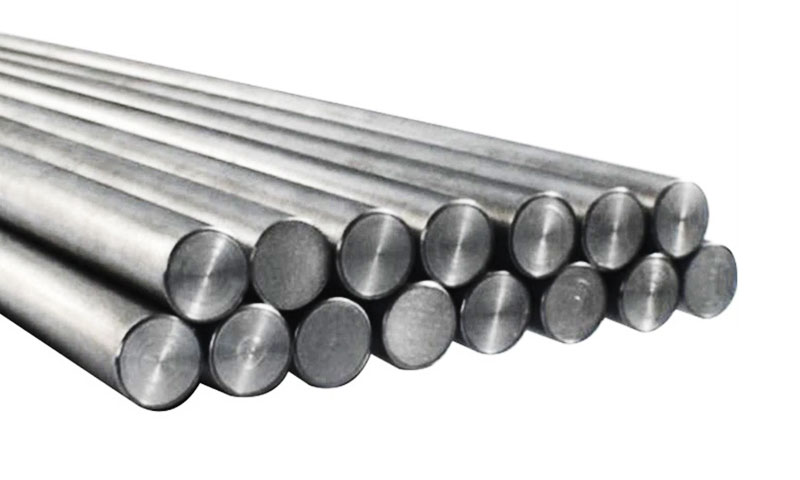1. Ներածություն
Ամերիկա S20910 (commonly marketed as Նիտրոնիկ 50 կամ XM-19) and UNS S21800 (commonly marketed as Նիտրոնիկ 60 կամ Խառնուրդ 218) are advanced austenitic Չժանգոտվող պողպատներ engineered for demanding service.
Both deliver better performance than conventional 300-series grades, but they are optimized for different priorities:
- S20910 (Նիտրոնիկ 50) է Կոռոզիոն դիմացկուն, nitrogen-strengthened austenitic stainless optimized for high corrosion resistance (including sour service), լավ ուժ, Գերազանց կոշտություն (including cryogenic), եւ լավ զոդելականություն.
It is often specified where resistance to pitting, SCC and low-temperature toughness are required together with reasonable strength. - S21800 (Նիտրոնիկ 60) is formulated primarily for wear and galling resistance while retaining corrosion resistance typical of austenitics.
It contains high silicon and manganese for tribological performance and is selected where sliding contact, գալարում, and high wear are the dominant failure modes.
This article compares composition, mechanical and corrosion behaviour, կեղծում, and real-world application trade-offs so you can select the right alloy for a specific component or environment.
2. What Is UNS S20910 (Նիտրոնիկ 50)
Ամերիկա S20910, սովորաբար հայտնի է որպես Նիտրոնիկ 50 կամ XM-19, է high-performance nitrogen-strengthened austenitic stainless steel.
It is engineered to deliver a combination of Գերազանց կոռոզիոն դիմադրություն, Բարձր ուժ, առաձգականություն, եւ կոշտություն, including at cryogenic temperatures.
These attributes make it well-suited for demanding industrial applications such as chemical processing, Ծովային միջավայրեր, and sour-service conditions.
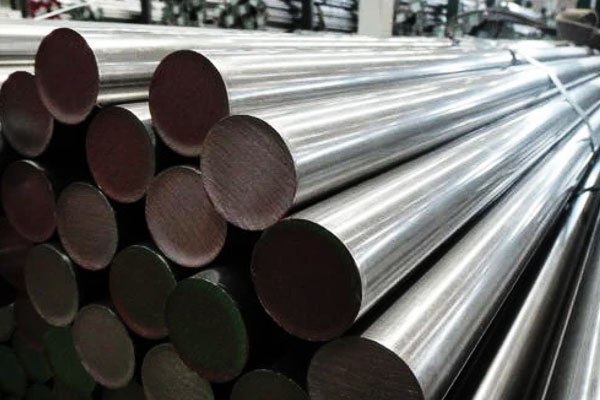
Key material designations and specifications ներառել:
- ASTM A276 / A479 (as XM-19)
- UNS S20910
- Դեպի 1.3964
Primary characteristics of UNS S20910 (Նիտրոնիկ 50):
- Կոռոզիոն դիմադրություն: Enhanced by increased chromium, մոլիբդեն, եւ ազոտի պարունակությունը; highly resistant to pitting and crevice corrosion in chloride environments.
- Մեխանիկական ուժ: Stronger than conventional 300-series stainless steels, with excellent yield and tensile properties.
- Ductility and toughness: Maintains performance at both elevated and cryogenic temperatures.
- Fabrication and weldability: Can be machined, ձեւավորված, and welded with conventional techniques; solution annealing restores ductility after cold working.
- Nitrogen-strengthened: Nitrogen addition increases yield strength and contributes to pitting resistance without compromising austenitic ductility.
- Application suitability: Listed in Nace MR0175 for sour service, suitable for marine hardware, Քիմիական պրոցեսների սարքավորումներ, Press նշման բաղադրիչներ, and structural applications requiring corrosion resistance and mechanical performance.
3. What Is UNS S21800 (Նիտրոնիկ 60)
Ամերիկա S21800, սովորաբար կոչվում է Նիտրոնիկ 60 կամ Խառնուրդ 218, է high-performance austenitic stainless steel designed primarily for wear and galling resistance, while maintaining good corrosion performance typical of austenitics.
Its specialized composition makes it ideal for applications where sliding contact, Սոսինձ հագնում, and high surface stress are primary concerns.
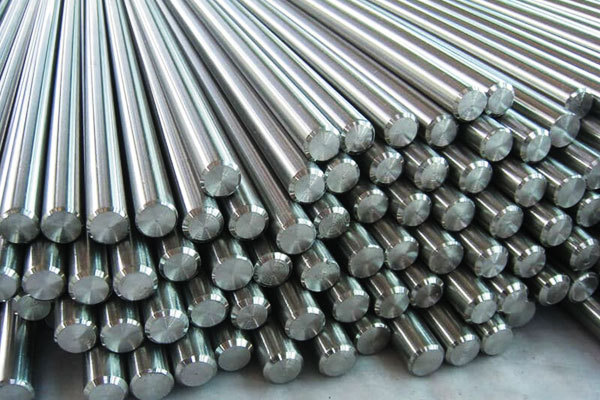
Key material designations and specifications include:
- ASTM A276 / A479 (for bars, ձողեր, and other wrought forms)
- UNS S21800
Primary characteristics of UNS S21800 (Նիտրոնիկ 60):
- Wear and galling resistance: Elevated manganese and silicon content, combined with a nitrogen-strengthened austenitic matrix, provides superior resistance to գալարում, Սոսինձ հագնում, and surface seizure.
- Կոռոզիոն դիմադրություն: While not as corrosion-resistant as Nitronic 50 in highly aggressive chloride environments, Այն առաջարկում է Լավ ընդհանուր կոռոզիոն դիմադրություն suitable for moderate chemical and marine exposures.
- Մեխանիկական ուժ: Exhibits high strength in both annealed and cold-worked conditions, with excellent surface hardness after work hardening.
- Fabrication and welding: Can be welded and fabricated using standard methods, though its higher silicon and manganese content may require adjustments in welding filler selection and machining parameters.
- Application suitability: Սովորաբար օգտագործվում է Փական բխում, ամրացումներ, Պոմպի լիսեռներ, bearing surfaces, and other components subjected to repeated sliding contact or wear-intensive service.
4. Typical Chemical Compositions and Alloying Differences
A critical factor distinguishing UNS S20910 (Նիտրոնիկ 50) and UNS S21800 (Նիտրոնիկ 60) is their alloying strategy, which directly influences corrosion resistance, Մեխանիկական ուժ, wear behavior, and fabrication characteristics.
While both are nitrogen-strengthened austenitic stainless steels, they are optimized for different service priorities.
Representative Chemical Compositions (wt%) and Performance Role
| Տարր | UNS S20910 (Նիտրոնիկ 50) | UNS S21800 (Նիտրոնիկ 60) | Key Role in Performance |
| Ածխածնային (Գ) | ≤ 0.06 | ≤ 0.10 | Controls strength, limits carbide formation; low C improves corrosion resistance and weldability |
| Քրոմ (Խուզարկու) | 20–23 | 16-18 | Primary contributor to corrosion resistance; higher Cr in S20910 increases PREN |
| Նիկել (Մեջ) | 11-14 | 8-9 | Austenite կայունացուցիչ; ուժեղացնում է կոշտությունն ու ճկունությունը; higher Ni in S20910 supports cryogenic performance |
| Մանգան (Ժլատ) | 5-6 | 8-9 | Increases work-hardening and galling resistance; high Mn in S21800 aids wear performance |
| Սիլիկոն (Մի քանազոր) | ≤ 0.5 | 3.5-4.5 | Improves oxidation and wear resistance; higher Si in S21800 supports galling resistance |
| Մոլիբդեն (Ժամանակ) | 1.5-3 | Չի նշված / հետք | Ուժեղացնում է փոսին եւ ծալքավոր կոռոզիոն դիմադրությունը; present in S20910 to resist chlorides |
| Ազոտ (Ն) | 0.10-0.20 | 0.08–0.18 | Strengthens austenitic matrix; Բարելավում է կոռոզիոն դիմադրությունը; supports wear resistance in S21800 |
| Երկաթ (Անք) | Հավասարակշռություն | Հավասարակշռություն | Matrix տարր; balances alloying; provides basic austenitic structure |
Interpretation: S20910 emphasizes Խուզարկու + Մեջ + Ժամանակ + Ն (classic austenitic corrosion alloying with nitrogen strengthening and Mo for pitting resistance).
S21800 trades some chromium and nickel for elevated silicon and manganese, which improve hardness, wear and galling resistance.
4. Mechanical Properties and Temperature Behaviour
Ամերիկա S20910 (Նիտրոնիկ 50) and UNS S21800 (Նիտրոնիկ 60) exhibit distinct mechanical profiles reflecting their alloying strategies.
Հիմնական մեխանիկական հատկություններ
| Սեփականություն | UNS S20910 (Նիտրոնիկ 50) | UNS S21800 (Նիտրոնիկ 60) | Practical Implication |
| 0.2% Բերք տալ ուժ (MPA) | 350-420 | 320-380 | S20910 offers higher baseline strength for corrosion-critical applications; S21800 gains strength via work hardening |
| Առաձգական ուժ (MPA) | 650-750 | 600-700 | S20910 provides slightly higher ultimate strength; S21800 maintains adequate tensile strength with wear focus |
| Երկարացում (%) | 30-45 | 25-40 | S20910 maintains excellent ductility; S21800 is slightly less ductile but sufficient for forming/fabrication |
| Կարծրություն (Ժլատ / Հաշտություն) | HRB ~85 typical annealed | HRB ~85, can be higher with work hardening | S21800’s higher Mn/Si allows superior surface hardness after cold work, enhancing galling resistance |
| Ազդեցության կոշտություն (J at room temp) | Գերազանց; retains toughness at cryogenic temps (-196° C) | Լավ; slightly lower than S20910 in cryogenic applications | S20910 preferred in low-temperature or highly dynamic loading applications |
| Elevated Temperature Performance | Good up to ~600–700°C | Reasonable; high Si improves oxidation resistance at moderate temperatures | S20910 favored for high-temperature corrosion exposure; S21800 for wear-exposed high-temperature components |
Temperature Behaviour
- Cryogenic Performance:
S20910 retains ~90% of impact energy at liquid helium temperatures, making it suitable for LNG storage, cryogenic piping, եւ օդատիեզերական դիմումներ.
S21800 retains reasonable toughness but is not optimized for extreme low temperatures. - Բարձրացված ջերմաստիճանի կատարում:
Both alloys maintain dimensional stability and strength at moderate elevated temperatures.
Nitronic 50’s Mo content provides additional resistance to high-temperature corrosion, while Nitronic 60’s high Si content improves oxidation resistance in sliding-contact applications. - Աշխատանքի կարծրացում:
Both alloys are austenitic and work-hardening, meaning mechanical properties, especially hardness and yield strength, can be increased via cold working.
S21800 benefits most due to high Mn and Si, improving wear and galling performance.
5. Corrosion Resistance and Pitting Resistance (Փայտ)
Pitting դիմադրության համարժեք համարը (Փայտ) is a useful indicator of resistance to chloride pitting; it’s calculated from Cr, Mo and N content (simplified form: PREN ≈ Cr + 3.3MO + 16N).
- Նիտրոնիկ 50 (S20910) — higher Cr, Mo and N yield PREN values in the low-to-mid 30s (typical engineering figure ≈ ~34).
That places it well above 316L (PREN ≈ 20–25) and makes it suitable for many chloride-bearing environments, including some marine and sour service (it is commonly accepted for NACE MR0175 qualifying in many conditions—verify certificate). - Նիտրոնիկ 60 (S21800) — because Mo is typically absent and Cr is lower, PREN is իջնել (typical mid-20s or less depending on exact chemistry).
While S21800 resists general corrosion reasonably well, Դա է ոչ chosen primarily for pitting resistance; փոխարեն, it is used where galling and wear are primary concerns.
6. Հագնել, galling and tribological performance
- Նիտրոնիկ 60 (S21800) is engineered for galling resistance and sliding wear.
High silicon and manganese, combined with work-hardening capacity, produce a surface that resists adhesive wear and metal-to-metal seizure.
Typical uses include valve stems, նստատեղեր, ամրացումներ, and pump components where repeated sliding contact occurs. - Նիտրոնիկ 50 (S20910) առաջարկներ Լավ հագնելու դիմադրություն, but its primary strengths are corrosion resistance and toughness rather than optimized galling resistance.
It is sometimes used in wear applications where corrosion control is also required, but for extreme galling environments S21800 usually outperforms it.
7. Կեղծում, welding and heat-treatment considerations
Եռակցման հնարավորություն
- Both alloys are զոդելի by standard processes (TIG, Ես, SMAW).
- S20910 (higher Ni/N) is highly weldable and retains corrosion resistance after welding when proper procedures and filler metals are used.
Low carbon and stabilized practices can minimize sensitization risk. - S21800 requires attention to heat input and filler selection because its high Si and Mn can influence weld metal composition; preheat/post-weld heat treatment practices depend on component size and code requirements.
Forming and machining
- Both are աշխատասեր austenitics; S21800’s higher Si/Mn can make cutting more challenging—tooling and speeds need adjustment.
S20910 in solution-annealed condition is generally easier to machine/form.
He երմամշակում
- These are austentic alloys—strength is primarily from cold working and alloying; full hardening by quench/tempering is not applicable.
Solution annealing can restore ductility and corrosion resistance (typical anneal ~1000–1100 °C followed by rapid cooling).
Hydrogen/sour service
- S20910’s chemistry and listing in some sour-service guidance make it suitable for H₂S environments (verify NACE/ISO certifications).
For sour service weld procedures and hardness limits (HRC thresholds) are normally enforced.
8. Applications of UNS S20910 vs UNS S21800 Austenitic Stainless Steel
The distinct alloying strategies, Մեխանիկական հատկություններ, and corrosion/wear characteristics of UNS S20910 (Նիտրոնիկ 50) և UNS S21800 (Նիտրոնիկ 60) define their suitability across different industrial applications.
Applications of UNS S20910 (Նիտրոնիկ 50)
UNS S20910 is engineered for Բարձր կոռոզիոն դիմադրություն, Գերազանց կոշտություն, եւ լավ զոդելականություն, making it ideal for environments where both corrosion and mechanical performance կրիտիկական են.
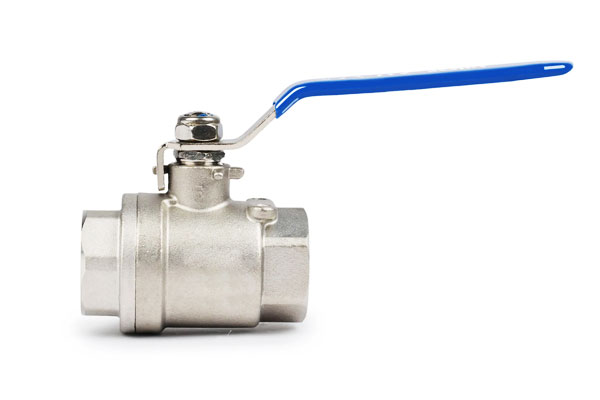
| Արդյունաբերություն / Սեկտոր | Բնորոշ ծրագրեր | Key Performance Requirement |
| Ծովային & Օֆշորային | Seawater fittings, Պոմպի լիսեռներ, ամրացումներ, փականներ | Բարձր քլորիդի դիմադրություն, prevention of pitting/crevice corrosion |
| Քիմիական & Գործընթացների սարքավորումներ | He երմափոխանակիչներ, ռեակտորներ, խողովակներ, տանկ | Resistance to acids, քլորիդներ, and sour service (H₂s ազդեցություն) |
| Cryogenic ծրագրեր | LNG storage and transfer piping, cryogenic valves | Retains toughness at extremely low temperatures (-196° C) |
| Օդատիենտ | Fuel lines, cryogenic components | Բարձր ուժ, Կոռոզիոն դիմադրություն, low-temperature ductility |
| Էներգիա & Հզորություն | Boiler components, turbine parts in corrosive environments | Combination of corrosion resistance and mechanical integrity |
Applications of UNS S21800 (Նիտրոնիկ 60)
UNS S21800 is optimized for galling and wear resistance while maintaining reasonable corrosion performance.
It is ideal for mechanical components subjected to sliding, adhesive contact, or high surface stress.
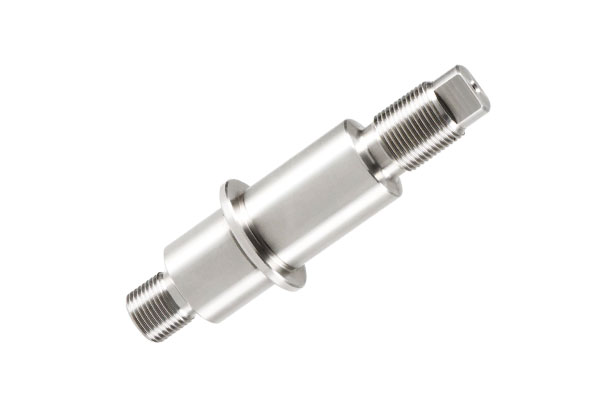
| Արդյունաբերություն / Սեկտոր | Բնորոշ ծրագրեր | Key Performance Requirement |
| Փխրուն & Pump Industry | Փական բխում, նստատեղեր, Պոմպի լիսեռներ, ամրացումներ | High resistance to galling, Լոգարիթմական հագուստ, adhesive seizure |
| Արդյունաբերական մեքենաներ | Առանցքակալներ, թփեր, high-wear mating surfaces | Մակերեսային կարծրություն, work-hardening capability, ցածր շփում |
| Ավտոմոբիլային & Ծանր տեխնիկա | Ամրացումներ, high-wear components, Ակտիվատորներ | Galling prevention, durability under repeated sliding or contact |
| Ծովային ծրագրեր | Deck hardware, mechanical joints | Moderate corrosion resistance with high wear/galling protection |
| Քիմիական մշակում | Mixer shafts, agitator blades | Wear-resistant components where moderate corrosion occurs |
Application Guidance
- Choose UNS S20910 when the primary concern is corrosion resistance in aggressive or sour environments, especially when toughness, զոդում, and low-temperature performance are required.
- Choose UNS S21800 when գալարում, հագնել, and sliding contact dominate failure modes, even if corrosion resistance is less critical.
- In complex assemblies, hybrid designs can leverage both alloys—using S20910 for corrosion-critical parts and S21800 for high-wear mating surfaces.
Surface engineering such as ծածկույթներ, նիտրանտային, or PVD treatments can further extend service life when combined with these alloys.
9. Direct Comparison Table: UNS S20910 vs UNS S21800
| Հատկորոշում / Սեփականություն | UNS S20910 (Նիտրոնիկ 50) | UNS S21800 (Նիտրոնիկ 60) | Practical Implication |
| Primary Focus | Կոռոզիոն դիմադրություն, կարծրություն | Wear/galling resistance, մակերեսային կարծրություն | Guides selection based on environment and mechanical stress |
| Բերք տալ ուժ (MPA) | 350-420 | 320-380 | S20910 has higher baseline strength; S21800 can achieve higher surface hardness via cold work |
| Առաձգական ուժ (MPA) | 650-750 | 600-700 | S20910 slightly higher; S21800 optimized for wear resistance rather than ultimate strength |
| Երկարացում (%) | 30-45 | 25-40 | S20910 more ductile; S21800 slightly less but adequate for fabrication |
| Կարծրություն (Ժլատ / Հաշտություն) | HRB ~85 typical annealed | HRB ~85, can increase with work hardening | S21800 better for galling and surface wear applications |
| Ազդեցության կոշտություն | Գերազանց; retains cryogenic performance | Լավ; lower at cryogenic temperatures | S20910 preferred in low-temperature or dynamic loading environments |
| Կոռոզիոն դիմադրություն | Շատ բարձր | Չափավոր | Guides alloy choice in chemical, ծովային, or sour-service applications |
| Հագնել / Galling Resistance | Չափավոր | Շատ բարձր | S21800 is the preferred option for moving parts, Փական բխում, եւ ամրացումներ |
| Կեղծում & Եռակցում | Գերազանց; solution annealed or strain-hardened | Լավ; requires consideration for welding filler and machining parameters | S20910 easier to fabricate in complex geometries; S21800 may require tooling adjustments |
| Ծառայությունների առավելագույն ջերմաստիճանը | ~900°C | ~750°C | S20910 suitable for higher temperature corrosion exposure; S21800 for wear-exposed moderate temperatures |
| Փայտ (Pitting դիմադրության համարժեք համարը) | ~34 | ~23.4 | S20910 provides superior resistance to pitting and crevice corrosion, Հատկապես |
10. Եզրափակում
Ամերիկա S20910 vs S21800 are complementary alloys within the Nitronic family.
Pick S20910 where corrosion resistance (especially pitting/crevice and sour service) plus toughness and weldability are paramount.
Pick S21800 where galling and wear dominate and corrosion is a secondary concern.
In many real applications the optimum solution is a combination—design the system so each part sees the alloy best suited to its dominant failure mode, or apply surface engineering to extend service life.
ՀՏՀ
Are UNS S20910 and S21800 magnetic?
No—both are fully austenitic (or near-fully austenitic) in the annealed state, with magnetic permeability <1.005 (ASTM A342). Cold working may induce weak magnetism, but this is reversible via annealing.
Can I weld S21800 with standard stainless fillers?
Այո, but select fillers and procedures to accommodate S21800’s high Si/Mn chemistry—consult welding procedure specifications and filler supplier guidance.
Which alloy resists sulfide stress cracking (Գդալ)?
S20910 is commonly accepted for many SSC environments and is used in NACE-subject applications; verify specific NACE/ISO certification and hardness limits.
Is Nitronic 60 (S21800) suitable for seawater?
It has reasonable general corrosion resistance in seawater but lacks the pitting resistance of Nitronic 50 or Mo-bearing grades; if seawater pitting is critical, choose S20910 or a higher PREN alloy.
Can either alloy be heat-treated to increase strength?
These austenitic alloys gain strength mainly by Սառը աշխատանք եւ համաձուլվածքներ; conventional quench/temper treatments are not used to significantly increase strength. Solution annealing restores ductility/corrosion resistance.
